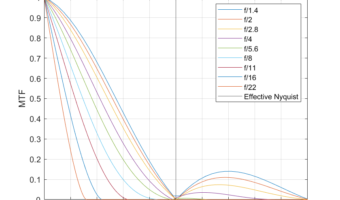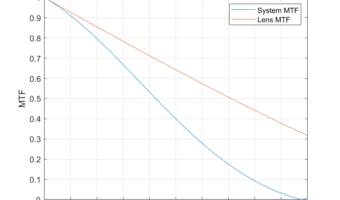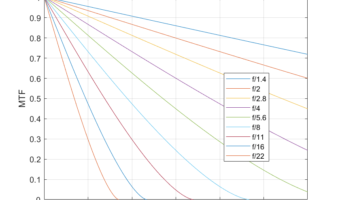I’ve received some queries about a future Nikon D6 review. I thought hard about doing one, and I’ve decided to take a pass on the D6. The improvements over the D5 seem modest at best, and I’m not particularly interested in the AF improvements, which are probably the most significant ones in the new camera…. [Read More]
Does pixel-shift increase resolution?
The a7RIV has 16-shot pixel shift technology. Fuji has said that they will be bringing that capability to the GFX 100 in a future firmware update. These events have rekindled the fires of discussion of that fifteen-or twenty-year-old scheme, specifically about how much the resolution of the system is increased. I am about to wax… [Read More]
Balancing real and fake detail — part 3
This is the third post on balancing real and fake detail in digital images. The series starts here. In the last post, in this series, I showed you some plots of a real sharpness metric and an aliasing metric versus f-stop for an ideal diffraction-limited lens and a camera with a 3.76 micrometer pixel pitch… [Read More]
Balancing real and fake detail — part 2
This is the second post on balancing real and fake detail in digital images. The series starts here. In the last post I looked at the amount of aliased and correctly reconstructed image detail in the case of a monochromatic sensor an ideal lens, in combination with some spherical aberration and defocusing. The calculations assumed… [Read More]
Balancing the capture of real and fake detail
It seems to me the most important contribution of the Fujifilm GFX 100 and Sony a7RIV over their immediate predecessors is reduced aliasing, rather than increased sharpness. The GFX 100 is not actually sharper than the GFX 50x cameras, if slanted-edge MTF50 is the sharpness criterion, but the images are dramatically more detailed and more… [Read More]
- « Previous Page
- 1
- …
- 32
- 33
- 34
- 35
- 36
- …
- 385
- Next Page »



